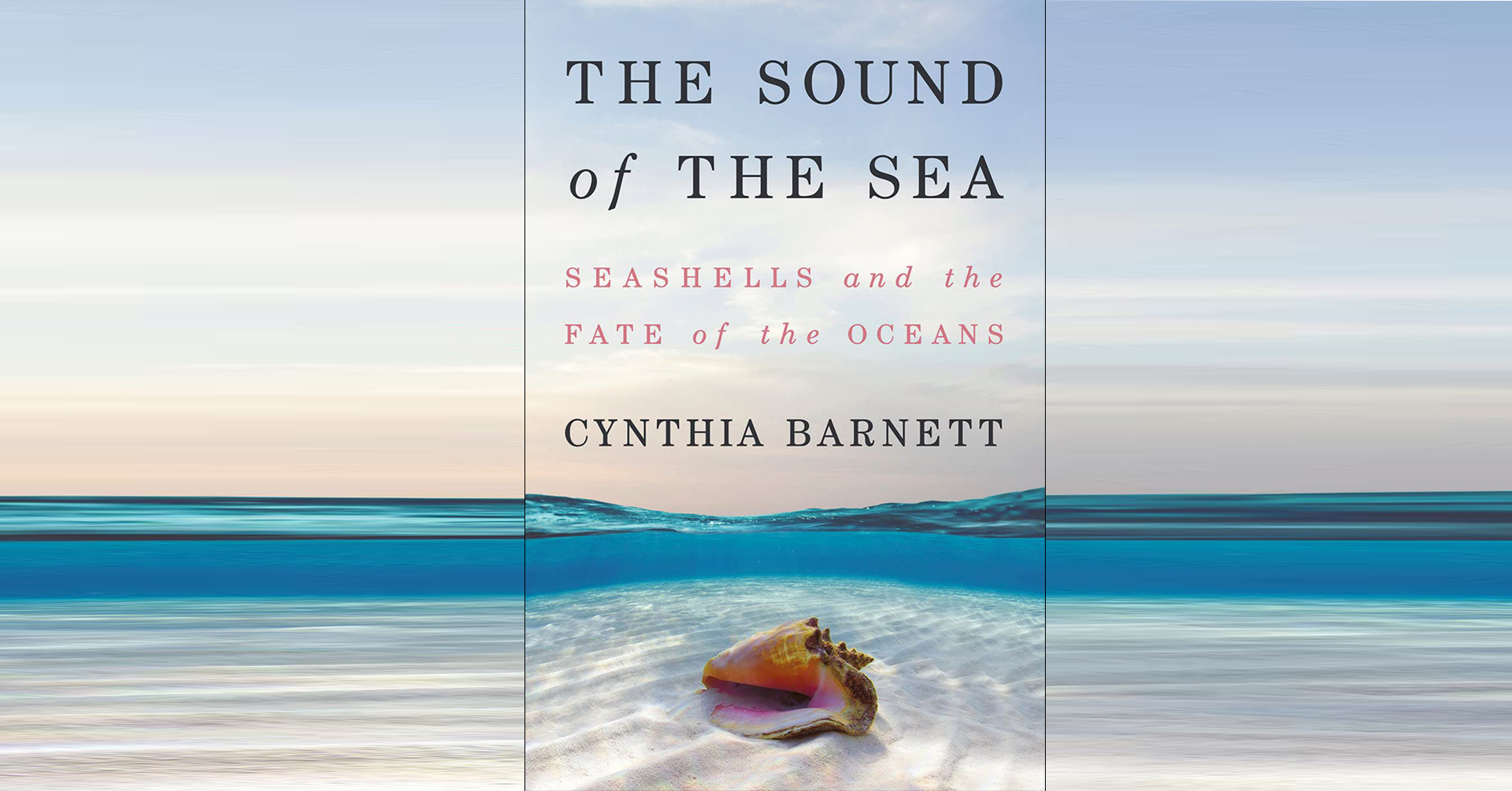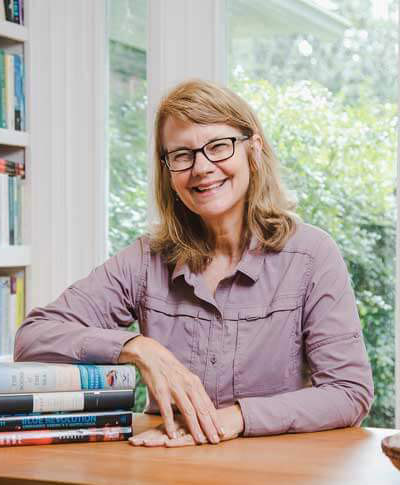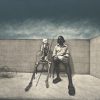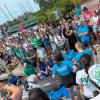
Cynthia Barnett’s recent book was named the Best Natural History Book of the Year by the Tampa Bay Times.
Renowned environmental author and journalist Cynthia Barnett came to Eckerd College on Sept. 26 to tell the community just how important listening to seashells can be.
Barnett, who currently works as the senior lecturer and environmental journalist in residence at the University of Florida’s College of Journalism and Communications, discussed her most recent book, The Sound of the Sea: Seashells and the Fate of the Oceans. It has won several awards—including honors from NPR Science Friday, Kirkus Reviews and the Library Journal—and was named the Best Natural History Book of the Year by the Tampa Bay Times. The book details the cultural history of seashells, connecting them to modern-day discussions on our changing oceans and identity within nature.

Author Cynthia Barnett
Barnett began her talk with a metaphor about seashells and the ocean, saying, “The way we love seashells is the way we love the ocean: for its beautiful exterior.”
She maintains that seashells are far more valuable than just beautiful objects. Seashells are incredibly culturally, historically and scientifically significant, functioning as sentinels of our changing seas and as representations of a vast and rich indigenous history.
“Seashells are telling us incredible truths more accurately than those written down,” she said. They were, “money before coin, jewelry before gems, art before canvas.” She explained that seashells were the earliest known keepsakes and have been found as grave goods in burial sites over 70,000 years old. The oldest piece of seashell jewelry was found interred in the grave of a 6-month-old baby, notched by hand and worn on a length of cord as a necklace. Shells known as “money cowries” were traded all over the country, with native Florida shells discovered as far inland as modern-day St. Louis. During the 17th century, imported shells grew so popular in Europe that the name ‘Shell madness’ was coined. Wealthy collectors would pay a fortune for beautiful shells, some even paying as much for a single shell as for a painting by Vermeer.
Barnett also emphasized the importance of seashells as an environmental “canary in a coal mine.” Since the animals that create seashells—such as scallops and mollusks—are so delicate, the slightest temperature change in the water can alter their behavior and growth patterns. The horse conch, Florida’s state shell, is suffering from shrinking population rates due to overfishing and ocean temperature rise, pushing the already vulnerable species closer to collapse. Barnett explained that listening to seashells is essential, saying, “I love this idea of listening to nature … seeking wisdom from [seashells’] polished whorls.”
At the end of the presentation, students, faculty and community members lined up for a chance to speak with the author and have their books signed.
Senior marine science and visual arts student from Downingtown, Pennsylvania, Abby Baumgard held a dog-eared copy of the book, having read it over the summer during a long research trip in the Alaskan wilderness. “I loved the book,” they said. “I think she does a really good job of bringing the narrative of Indigenous people into the story.”
The key message of Barnett’s talk? She explained that in her work, she tries to balance warning and wonder, but she also highlighted both environmental and social justice—concluding with the statement: “We won’t be able to fix environmental problems without first righting human injustices.”












